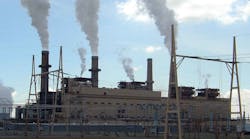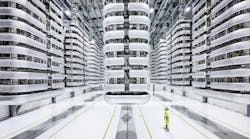Have you ever heard of subsynchronous resonance (SSR) in power systems? Back in the early 1970s this was a topic that was on just about everyone’s mind if they worked in an area of extremely long transmission lines. The long lines produced excessive inductive reactance, which impedes the amount of power that can be transferred over the line. The traditional solution was to install series capacitors on the lines, but there was a down side. Adding the series capacitors introduced a phenomenon of SSR, which caused some unforeseen problems. Case in point, two turbo-generators shafts were damaged at the Mohave Generating Station in Nevada in 1970 and 1971 because of this torsional interaction.
Without going into a lot of detail, the interaction of electrical and mechanical natural frequencies produced a resonance that in the worst case cause the generator’s shaft to twist, which damaged the shaft. In the late 1970s, I went to work for a utility in New Mexico that was building a generation plant. The plant would be connected to long-series compensated transmission lines. Studies were made indicating the shafts for two of the four generating units were susceptible to SSR produced by the transmission grid – not good for the utility. I had only been with the company a few months when I was assigned to a project to install equipment designed to mitigate the SSR issues and protect the generators.
Technology Advancements
Coincidentally, the thyristor was introduced in the early 1970s, and manufacturers came up with several uses in addition to HVDC applications such as thyristor switched capacitors (TSCs) and thyristor controlled reactors (TCRs). Westinghouse had designed a system that would eliminate SSR problems for the new generating station using TCRs. They called it a dynamic stabilizer. The TCRs would be attached to the generator’s isophase bus to feed controlled inductance into the bus counteracting the SSR forces and stabilizing the system. The SSR detection was a toothed-wheel arrangement placed on the generators’ shaft. A sensor was attached to the housing that looked down on the toothed-wheel/shaft and monitored the shaft for oscillations. When these were detected, a conduction signal was sent to the thyristor assembly and the reactors were placed in the network. By today’s standards, it was a real Rube Goldberg machine, but back in the day it was state-of-the-art high tech!
We installed two of these devices in the power plant and they protected the generators for many years before the system dynamics changed enough that they were no longer needed. The TCRs and TSCs would go on to be used in other devices, but more on that in another column. A few years later, my experience with this thyristor controlled device would help me land the project engineer position for an HVDC converter station using thyristor valves. Next month we will look at another SSR eliminating technology.


